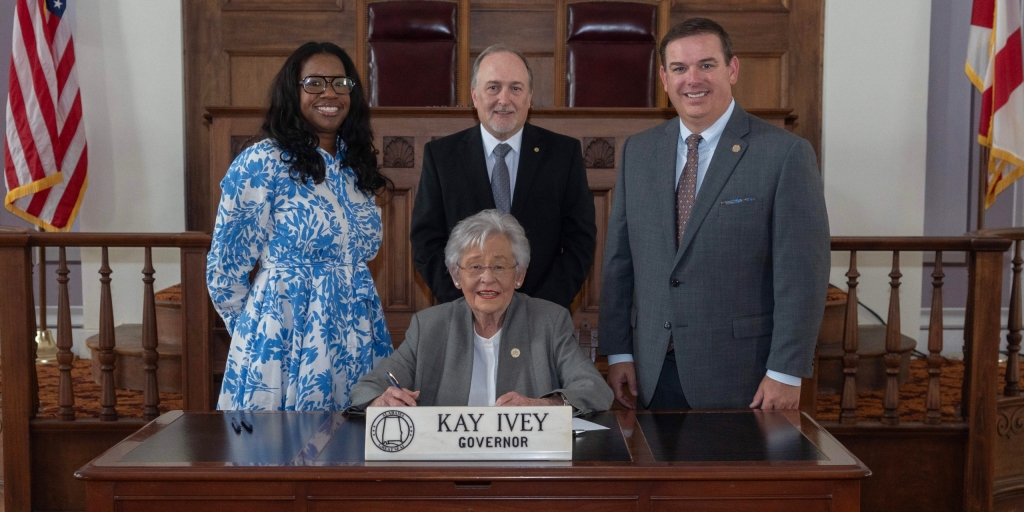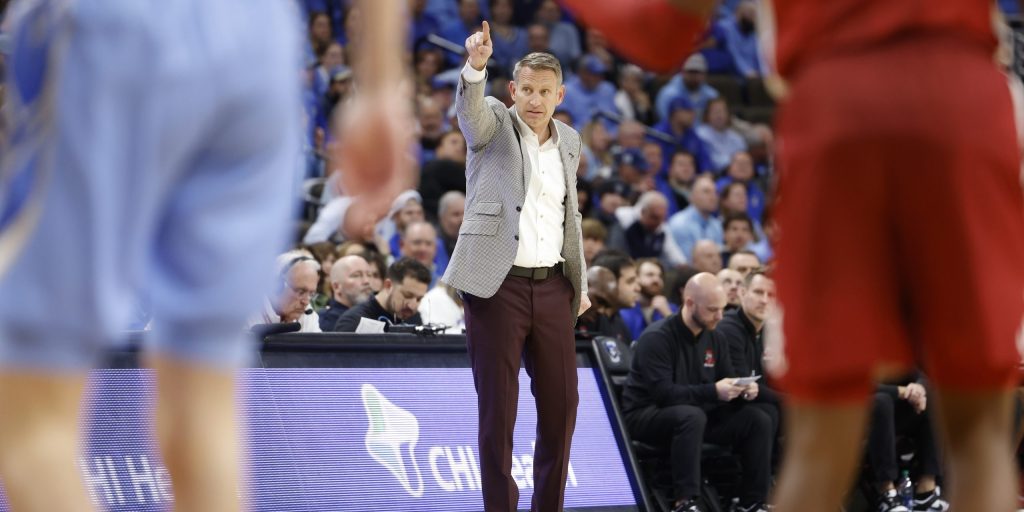As Alabama High School Athletic Association officials put the wraps on their fall schedule with the Super 7 Championships at Bryant-Denny Stadium, they will begin assembling enrollment numbers to determine which schools will be placed in each of the seven classifications designated for athletic competition in 2024-26.
They’ll also visit the private school dilemma, a perceived advantage by private schools over their public school counterparts, that had private schools assigned a multiplier in 1999 and a classification adjustment for success in specific sports in 2018.
Both designs have proven ineffective, forcing AHSAA officials to consider placing the private schools in their own division for postseason competition.
While the Alabama High School Athletic Association entertains proposals each year from member school to modify or adjust its governing rules for athletic competition, the two biggest actions taken against private schools in the last 25 years weren’t proposals from the AHSAA member schools and can’t be found in the organization’s bylaws. Rather, it’s special legislation adopted from policies employed by other state associations as a method of adjusting those private schools — and only private schools — that enjoy postseason success, a way of satisfying the public school officials who maintain the private schools enjoy an unfair advantage.
It’s an advantage that certainly exists among private schools in their athletic competition with rural, underfunded county school systems. After all, the entire athletic funding for private high schools is directed at one school, whereas a county school system may have to divide its athletic budget among five high schools, directing the same amount of money to a struggling athletic program at one school as it does toward a successful one in the school district.
That problem doesn’t exist among one-high school public school districts (i.e., Thompson, Mountain Brook, Pike Road, Jasper, etc.) who can suddenly enhance a tennis program through funding or pay more money to hire a girls’ basketball coach. Of the 118 championship trophies awarded to AHSAA members in 2023 (not counting e-sports), 35 were awarded to public schools that exist in a one-school city system, while 31 went to private schools.
Clearly, the private schools don’t have the advantage that many believe they do.
The 1.35 multiplier is ineffective, yet remains in place
The argument has existed almost as long as private schools have been AHSAA members, prompting a move in 1999 to install a multiplier on private schools that count every private school student as 1.35 people. While its ineffectiveness has caused other state organizations to eventually repeal the multiplier, it remains in place in Alabama, causing the 23 of the 27 largest AHSAA-member private schools to be elevated at least one classification by the booster. (Among the 26 smallest members, which would all be Class 1A in enrollment, the multiplier only boosts the nine largest to Class 2A).
Nearly two decades later, the private vs. public debate found its way into a proposed bill in the Alabama Legislature. An AHSAA task force comprised of representatives from both private schools and public schools was quickly assembled to come up with a solution. Their recommendation, the idea proposed by AHSAA administrators, was the Competitive Balance Factor.
“Some of our (Central) Board members were on the Competitive Balance task force,” then-AHSAA executive director Steve Savarese said at the time. “Three of (the five options) were not considered by the task force. The board had instructed me years ago that we needed to adjust the multiplier. As we looked at it and studied other state associations, our job as an association was to bring the data back to the task force. The task force started to analyze it and they saw that we’ve always had a competitive balance factor. What’s our competitive balance factor been all the time? It’s been 1.35.
“Instead of raising it to 1.85 or 2.25, we adjusted it based on the areas (or sports) that were having more success. We have private schools that are not located in the high-density areas and for some of the private schools, raising their multiplier would have egregious consequences. This way, the task force was addressing the schools that, because of their resources, have more advantages and, consequently, are more successful. Doing an across-the-board competitive balance of 1.85, we could have done more damage than good.”
Competitive Balance Factor was introduced in Alabama in 2018
The AHSAA Competitive Balance Factor implemented in 2018 gave teams points based on their level of postseason success and divided some sports into single sports while linking others (such as basketball, soccer and tennis) into dual sports that counted both the boy’s and girl’s totals together. Single sports needed more than six points to rise in classification and dual sports had to earn more than 11 points.
Teams that didn’t earn two points in single sports or four points in dual sports over a three-year period could drop in classification if they had previously been elevated by Competitive Balance Factor.
But a flaw in the system was quickly discovered as the data to compile points was assembled over three years, meaning teams could be penalized for results over multiple classification periods. A private school whose data was used in the classification periods of 2016-18 and 2018-2020 would be penalized for the data in 2018-2020 both in classifying the school in 2018 and again in 2020.
In 2020, Competitive Balance Factor was adjusted again, this time relying on two years of data while lowering the thresholds in both single and dual sports. In addition, teams who didn’t receive any points until the third round of the playoffs would now receive an additional 0.5 point for reaching the second round.
And the threshold for dropping back after elevation was reduced to one point in single sports and two sports in dual points, making it more difficult to drop in classification after elevation.
“It does make it harder to come back down because you don’t have to go very far (in the postseason) to start earning those points,” Montgomery Catholic athletic director Daniel Veres said at the time. “You earn half a point (in the first year) and half a point (in the second year) and you stay, but have you really had any success? It’s not like you have to win the second-round (playoff) game, you just have to win a first-round game. You haven’t competed for any kind of a championship.”
AHSAA-member athletic directors and coaches that represent private schools rarely speak on the subject, perhaps fearful of more “special legislation” from AHSAA administrators and their Central Board, but when Competitive Balance Factor was initially introduced, an immediate and predictable response came from the private school world.
“I understand the idea that if you’re dominating, you ought to move up,” said then-Saint James coach Jimmy Perry, who split his 43 years between public and private schools, “but if you’re dominating, why doesn’t every team that dominates move up? Why is it just the private schools? What’s good for one is good for everybody.”
As an example, Fyffe’s football team has dominated Class 2A (and 3A in 2020 and 2021) every year since Competitive Balance Factor was implemented, compiling an 84-3 record with five state championships in the six years of CBF. If the rule was applied to Fyffe, the Red Devils would be elevated to 3A in 2018 and 2019, 4A in 2020 and 2021, 5A in 2022 and 2023 and 6A next fall. It’s unlikely their dominance would continue if CBF rules were applied to their program.
“That was discussed,” Savarese said in 2018 of an across-the-board application. “But right now, the task force decided to start with this approach, to evaluate it and analyze it every two years.”
CBF has been adjusted in each of the last two classification periods
So, when it was evaluated and analyzed two years later, a new CBF model was initiated, making it more difficult for schools to drop after elevation. When it was evaluated and analyzed two years after that, in 2022, a group of Central Board members voted to implement the point system to all private schools regardless of whether they were currently elevated by CBF.
Alabama Christian Academy, which had never had one sport elevated by Competitive Balance, was not allowed to drop from 4A to 3A based on enrollment, a decision that sent shock waves through the private school world. If the Central Board could capriciously change its administration of rules and AHSAA administrators remained silent on the issue because they are technically employed by the Central Board, where would it end?
The Central Board’s 2022 decision ruled that once Competitive Balance Factor was applied to any private school, it was applied to all, so ACA’s quarterfinal playoff appearance a year earlier provided the one point necessary to keep the Eagles a 4A program, despite the fact no sport at the school had ever been elevated by Competitive Balance.
ACA appealed the decision and the Central Board would reverse itself two weeks later. The decision, however, remains a grim reminder that the public vs. private debate is a volatile issue that is neither influenced by money nor reason.
So as AHSAA administrators and the Central Board consider the next classification period for its members (which cover the 2024-25 and 2025-26 school years), what’s on tap for private schools? Clearly, there is pressure to do something else because both the multiplier and Competitive Balance Factor have been failures.
In the five years before Competitive Balance Factor was implemented, 195 state championships were won by private schools, including 43 in the school year (2017-18) before Competitive Balance. In the five school years since the implementation of Competitive Balance (but not counting 2023-24). a total of 167 state championships were won by private schools, but 10 sports didn’t hold championships in 2020 because of COVID. Adjusting those sports with an estimated 25 championships lost to COVID, (the number won in 2017-18), the total becomes 192.
In football, seven championships were won in 2013-17 vs. six in 2018-22; in volleyball, 17 titles were presented to private schools in 2013-17 vs. 20 in 2018-22. In the five years before CBF, private schools won 18 championships in baseball and softball, 21 in boys’ and girls’ soccer and 25 in boys’ and girls’ tennis; in the four championship seasons since, 15 were won by private schools in baseball and softball, 18 in soccer and 17 in tennis.
Will the next step place private schools in their own division?
Every year, AHSAA members are allowed to propose legislation to modify the rules. This past year, AHSAA members had several proposals as well as some surveys (proposals generated by AHSAA administrators to gauge interest) that focused on putting the private schools in a separate division for postseason play. The private schools could play public schools during the season but would be placed in two private-only classifications for postseason play.
AHSAA officials met with four schools from the Alabama Independent School Association that are finalizing plans to join the AHSAA in 2024, but didn’t inform the school administrators initially they were working on a plan that would place the private schools in their own classification for postseason competition.
The AHSAA Central Board could consider adjusting the enrollment multiplier, but as Savarese pointed out, too much of a multiplier is not a good thing. They could tweak Competitive Balance Factor, but it’s already proven to be a failure.
Among the 30 largest AHSAA-member private schools, all but six have at least one sport elevated to a higher classification by Competitive Balance, yet private schools have brought home a championship trophy in every sport in 2023 except flag football (which offers just two classifications).
Montgomery Academy, a 2A school based on enrollment that is boosted to 3A by the 1.35 multiplier, competes in 3A in baseball, softball, golf, basketball, cross country and indoor track. Under the Competitive Balance Factor, the Eagles are 4A in football and outdoor track, 5A in volleyball (moving to 6A next year), 6A in soccer (moving to 7A next year) and 7A in tennis.
And as crazy as that sounds, the Competitive Balance rules that elevated Montgomery Academy to 7A in tennis will keep them there. The top two teams (in their case, Montgomery Academy and Auburn) from each of four regions advance to an eight-team state tournament, earning each private school that advances to the state tournament a point each time. Since Montgomery Academy defeated the six region opponents other than Auburn by a combined 49-0 score in six regular-season matches, they’re likely to advance to the state tournament (and therefore reach the threshold) every single year, forever remaining a 7A opponent until AHSAA officials change the rules.
With two years of data completed for the fall sports of football, volleyball and cross country, it’s already clear that a record number five schools will be elevated in football, along with eight schools in volleyball and eight others in cross country. More will earn that distinction in the winter and spring sports, even though the data show Competitive Balance Factor is ineffective.
Twenty-four of the largest 30 AHSAA-member private schools are either elevated in at least one sport by CBF or certain to move up in the next classification and there’s still another school year remaining in the winter and spring sports. By the end of the school year, it could be closer to 30 out of 30.
It’s uncertain what type of speech will be directed to the student-athletes by the headmaster or board members from the four former AISA schools joining the AHSAA this fall. Virtually any postseason success they enjoy will be penalized by the AHSAA. What lessons will those future leaders take from participating as a student-athlete in the AHSAA?
In the latest round of proposals made by member schools and surveys introduced by AHSAA officials, there was an effort to apply Competitive Balance to open enrollment schools (those who accept students who pay tuition from outside of their school zone), an effort to separate boys’ and girls’ sports from counting together in Competitive Balance, an effort to apply Competitive Balance across the board to every school and an attempt to raise the multiplier to 3.0, along with three proposals to separate the private schools into their own division.
Sooner, rather than later, more special legislation will be introduced to penalize the private schools in the public vs. private debate. And if past legislation is any indication, it won’t resolve the issue.
Tim Gayle is a professional sports journalist who has covered athletics across Alabama since the 1980s.












